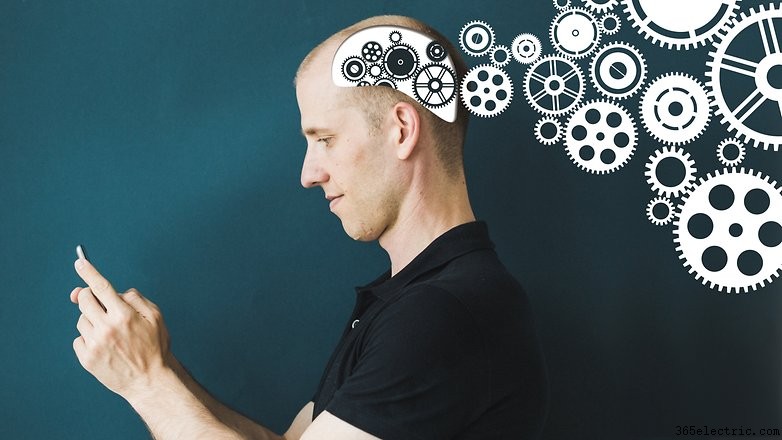Cos'è l'IA? Cronologia, definizioni e applicazioni
Tutti parlano di intelligenza artificiale, nota anche nella sua forma abbreviata, AI. Ma di cosa si tratta? Questo è esattamente ciò che spiegheremo oggi.
- L'IA significherà la fine della responsabilità personale?
- Cosa significa davvero l'IA nel tuo smartphone
Cronologia
L'intelligenza artificiale sta giocando un ruolo sempre più importante nelle nostre vite e l'ultima tendenza sono i chip AI e le relative applicazioni per smartphone. Ma questa tecnologia iniziò a svilupparsi già negli anni '50 con il Dartmouth Summer Research Project on Artificial Intelligence al Dartmouth College negli Stati Uniti. Le sue origini risalgono ancora più lontano al lavoro di Alan Turing, al quale si può attribuire il famoso test di Turing —, Allen Newell e Herbert A. Simon, ma l'IA non è entrata sotto i riflettori della scena mondiale fino all'arrivo del supercomputer per scacchi Deep Blue di IBM, che è stata la prima macchina a sconfiggere l'allora campione mondiale di scacchi Garry Kasparov in una partita nel 1996. Gli algoritmi di intelligenza artificiale sono stati utilizzati nei data center e sui computer di grandi dimensioni per molti anni, ma solo più recentemente è presente nel regno dell'elettronica di consumo.
Definizione di intelligenza artificiale
La definizione di intelligenza artificiale la caratterizza come una branca dell'informatica che si occupa di automatizzare il comportamento intelligente. Ecco la parte difficile:dal momento che non puoi definire con precisione l'intelligenza per sé , neanche l'intelligenza artificiale può essere definita esattamente. In generale, il termine è usato per descrivere sistemi il cui obiettivo è utilizzare macchine per emulare e simulare l'intelligenza umana e il comportamento corrispondente. Questo può essere ottenuto con algoritmi semplici e modelli predefiniti, ma può anche diventare molto più complesso.

Vari tipi di IA
IA simbolica o manipolatrice di simboli lavora con simboli astratti usati per rappresentare la conoscenza. È l'IA classica che persegue l'idea che il pensiero umano può essere ricostruito a livello gerarchico, logico. Le informazioni vengono elaborate dall'alto, lavorando con simboli leggibili dall'uomo, connessioni astratte e conclusioni logiche.
- Le IA vengono sollevate sui videogiochi... non per batterci, ma per unirsi a noi
IA neurale divenne popolare nell'informatica alla fine degli anni '80. Qui, la conoscenza non è rappresentata attraverso simboli, ma piuttosto neuroni artificiali e le loro connessioni, una specie di cervello ricostruito. La conoscenza raccolta viene scomposta in piccoli pezzi - i neuroni - e quindi collegata e costruita in gruppi. Questo approccio è noto come il metodo bottom-up che funziona dal basso. Unlike symbolic AI, a neural system must be trained and stimulated so that the neural networks can gather experience and grow, therefore accumulating greater knowledge.
Neural networks are organized into layers that are connected to each other via simulated lines. The uppermost layer is the input layer, which works like a sensor that accepts the information to be processed and passes it on below. This is now followed by at least two—or more than twenty in large systems—layers that are hierarchically above each other and that send and classify information via the connections. At the very bottom is the output layer, which generally has the least number of artificial neurons. It provides the calculated data in a machine-readable form, i.e. "picture of a dog during the day with a red car."
Methods and tools
There are various tools and methods for applying artificial intelligence to real-world scenarios, some of which can be used in parallel.
The foundation of all this is machine learning , which is defined as a system that builds up knowledge from experience. This process gives the system the ability to detect patterns and laws—and with ever-increasing speed and accuracy. In machine learning, both symbolic and neural AI is used.
Deep learning is a subtype of machine learning that is becoming ever more important. Only neural AI, i.e. neural networks are used in this case. Deep learning is the foundation for most current AI applications. Thanks to the possibility of increasingly expanding the design of the neural networks and making them more complex and powerful with new layers, deep learning is easily scalable and adaptable to many applications.
There are three learning processes for training neural networks:supervised , non-supervised and reinforcement learning , providing many different ways to regulate how an input becomes the desired output. While target values and parameters are specified from the outside in supervised learning, in unsupervised learning, the system attempts to identify patterns in the input that have an identifiable structure and can be reproduced. In reinforcement learning, the machine also works independently, but is rewarded or punished depending on the success or failure.
Applications
Artificial intelligence is already being used in many areas, but by no means are all of them visible at first glance. Therefore, selecting scenarios that take advantage of the possibilities of this technology is by no means a completed list.
Artificial intelligence’s mechanisms are excellent for detecting, identifying, and classifying objects and persons on pictures and videos. To that end, simple but CPU-intensive pattern detection is used. If the image information is decrypted and machine-readable in the first place, photos and videos can be easily divided into categories, searched and found. Such recognition is also possible for audio data.
Customer service is increasingly using chatbots . These text-based assistants perform recognition using key words that the customer may tell it and they respond accordingly. Depending on the use, this assistant can be more or less complex.
Opinion analysis is not only used for forecasting elections in politics, but also in marketing and many other areas. Opinion mining, also known as sentiment analysis, is used to scour the internet for opinion and emotional expressions, allowing for the creation of a largely anonymized opinion survey.
Search algorithms like Google’s are naturally top secret. The way in which search results are calculated, measured and outputted are largely determined by mechanisms that work with machine learning.
Word processing , or checking the grammar and spelling of a text, is a classic application of symbolic AI that has been used for a long time. Language is defined as a complex network of rules and instructions that analyzes blocks of text in a sentence and, under some circumstances, can identify and correct errors.
These abilities are also used in synthesizing speech , which is currently the talk of the town with assistant systems like Siri, Cortana, Alexa or Google Assistant.

On new smartphone chips like the Kirin 970, artificial intelligence is integrated into its own component, the NPU or neural processing unit .The processor is making its debut in the Huawei Mate 10. You will learn more about it and the roles that the technology will play on the Huawei smartphone once we have a chance to experiment with it in the near future. Qualcomm has already been working on an NPU, the Zeroth processor, for two years, and the new Apple A11 chip contains a similar component.
Furthermore, there are numerous research projects on artificial intelligence and the most prominent of all may be IBM’s Watson. The computer program had already made its first public debut in 2011 on the quiz show Jeopardy, where it faced off against two human candidates. Watson won, of course, and additional publicity appearances took place afterwards. A Japanese insurance company has been using Watson since January to check insured customers, their history and medical data and to evaluate injuries and illnesses. According to the company’s information, Watson has replaced roughly 30 employees. Loss of jobs through automation is just one of the ethical and social issues surrounding AI that is the subject of corporate and academic research.
Projection
AI isn’t something that just came out of nowhere recently, but it is coming close to a breakthrough in the world of consumer electronics, which is more than enough reason for everyone to keep up to date with this topic in the future.
Which aspects of artificial intelligence do you find exceptionally interesting? Let us know in the comments below!
